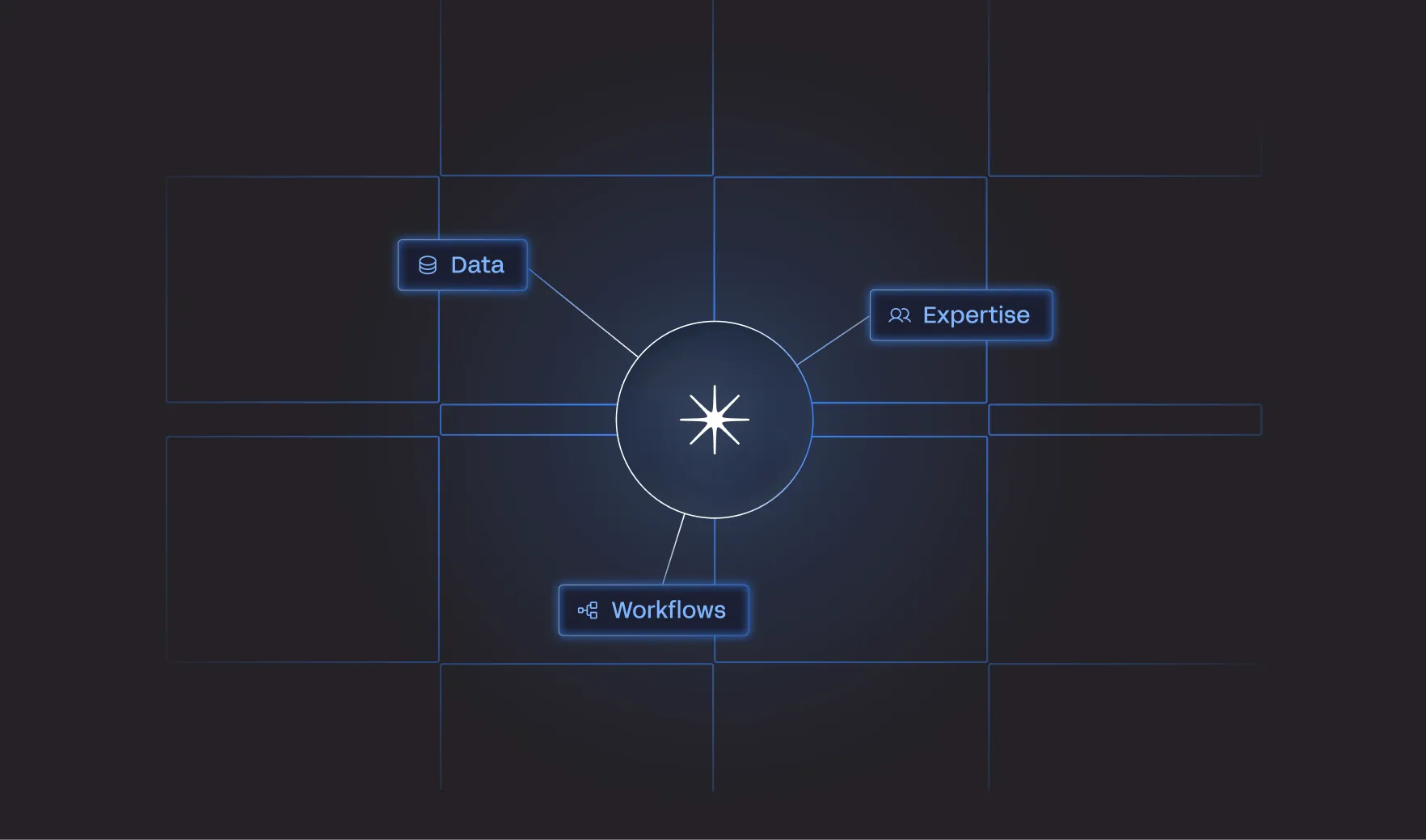Learn how contextual AI delivers real business value by connecting directly to relevant data, embedding into workflows, and keeping humans in the loop. Discover best practices for scoping, integration, and oversight.

Artificial intelligence has moved from hype to reality in recent years. Tools like ChatGPT, co-pilots, and other large language models (LLMs) are becoming part of daily life for many professionals. But while these tools can be impressive, simply “adding AI” is not a guaranteed path to business value.
The real differentiator is context. AI works best when it understands the specific environment, data, and workflows it operates within.
Generic AI tools shine for personal productivity, such as drafting an email, summarizing a document, or brainstorming ideas. But in a business setting, they often fall short for one simple reason: they work in isolation.
To use them for company-specific tasks, you typically need to upload documents or paste in content every time, then craft prompts to get the right output. Over time, this becomes slow, repetitive, and inconsistent.
Even with skilled prompting, the results can vary — and when accuracy, compliance, or traceability matter, that’s a risk businesses cannot ignore.
Contextual AI flips the model. Instead of manually feeding the AI information, the AI is integrated with the systems, software, and data sources you already use.
When connected securely to platforms like SharePoint, ERP systems, or project management tools, the AI can:
This eliminates manual steps and ensures that every AI-generated result reflects the reality of your business, not just generic knowledge.
AI is most effective when it’s embedded directly into the tools employees already use. Instead of acting as a separate app or dashboard, it becomes part of the workflow: drafting reports, filling forms, generating responses, or preparing analyses automatically.
"Connecting AI to data, that's one thing, but the real power comes when you embed this into an actual workflow or application that people use in their everyday work."
Kristian Mella, Appfarm CIO
This is essentially process automation powered by AI. Traditional automation has long removed repetitive steps from workflows; AI takes it further by handling unstructured data, making nuanced recommendations, and adapting to different scenarios.
Example: In a certification process that required documentation across hundreds of criteria, integrating AI at a single repetitive stage saved hundreds of hours per project. Rather than replacing the whole process, the AI focused on one clearly defined task — producing fast, accurate, and consistent results every time.
Read the case study on Baneservice who implemented AI in their BREEAM certification process, and streamlined the response to 248 criteria that were previously answered manually:
One of the biggest mistakes in AI adoption is trying to “AI everything.” Successful projects start by identifying specific, high-value use cases.
The best candidates are:
By narrowing the scope, businesses can build AI solutions that are reliable, measurable, and easy for employees to adopt.
"Our experience from talking to hundreds of companies is that it's not typically very clear how to actually implement AI, which problems it can solve, and how it can create value"
Kristian Mella, Appfarm CIO
Even the best AI needs oversight. In business contexts, accountability, compliance, and customer trust depend on human judgment.
Keeping a “human in the loop” ensures:
One proven method is to have AI generate multiple options using different techniques or models, then let an expert choose, refine, or combine the results. This approach balances speed with control.
Implementing AI successfully is not about adding another tool, but about creating the right environment for it to thrive. By utilizing a no-code platform you can securely connect AI to business data, integrated into workflows, and tailored to the way teams actually work. By acting as the hub between systems, processes, and people, a no-code solution makes it easier for organizations to scope the right use cases, embed AI directly into daily tasks, and maintain the necessary human oversight. The result is not just experiments with AI, but practical solutions that save time, improve quality, and unlock new opportunities.
Contextual AI isn’t just about making AI work. It’s about making it work for you.
By integrating AI into existing systems, defining clear use cases, and maintaining human oversight, businesses can move beyond experimentation and achieve tangible results.
"The question isn't if AI is going to transform business processes across industries, it's about if you, as a business, are proactive in taking those opportunities."
Kristian Mella, Appfarm CIO
The future of AI in business will not be defined by who has the most advanced model, but by who applies it most effectively within their unique environment.
Key Takeaways
When AI is placed in the right context, it stops being a novelty — and starts becoming a driver of real business transformation.

See tasks that used to take hours, be completed in seconds. Champion change that creates business value.